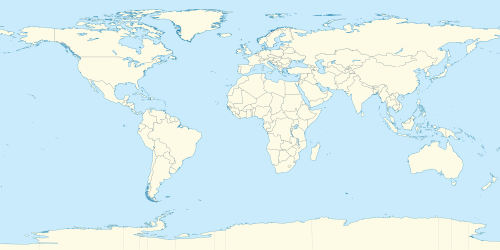TWA Flight 841 (1974)
Leonardo Da Vinci International Airport, Rome, Italy | |
| Destination | John F. Kennedy International Airport, New York City, U.S. |
|---|---|
| Occupants | 88 |
| Passengers | 79 |
| Crew | 9 |
| Fatalities | 88 |
| Survivors | 0 |
On September 8, 1974, a Boeing 707-331B (registered N8734[1]) operating as TWA Flight 841 from Tel Aviv to New York City via Athens and Rome crashed into the Ionian Sea, killing all aboard. The National Transportation Safety Board determined that the plane had been destroyed by a bomb hidden in the cargo hold. The detonation of the bomb destroyed the systems responsible for operating the plane's control surfaces, causing the plane to pitch up until it stalled and dove into the sea.[2][3]
Background
After the ousting of the PLO from Jordan following the Jordanian-Palestinian civil war, the Palestinian military organizations made South Lebanon into their headquarters, enlisting militants from Palestinian refugee camps. South Lebanon was also referred to as Fatahland, due to the almost complete control of Fatah and other military Palestinian organizations over this officially Lebanese area, which they used to stage attacks against Israel.
Aircraft and crew
N8734 (serial number 20063, manufacturing serial number) had its maiden flight on March 1969, and was purchased by
The captain was Donald H. Holliday, 55, who had 21,960 flight hours, including 7,280 hours on the Boeing 707. Due to farsightedness, he had to wear prescription glasses. Holliday's first officer was Jon L. Cheshire, 36, who had 9,139 flight hours, with 5,311 of them on the Boeing 707. The flight engineer was Ralph H. Bosh, 37, (6,634 flight hours, 3,548 of which were on the Boeing 707).[2]
There were six flight attendants on board the flight.[2]
Events
The airline's
After stopping for 68 minutes in Athens, it departed for Rome. About 30 minutes after takeoff, the plane crashed into the Ionian Sea. The out-of-control aircraft was observed by crew on the flight deck of
In Beirut, it was reported that a
Suspicion fell on Abu Nidal and his terror organization,[5] as responsibility was claimed by the "National Arab Youth Organization for the Liberation of Palestine", a group led by Abu Nidal from Libya.[6]
In January 2009, the Associated Press published an investigation saying that Khalid Duhham Al-Jawary, responsible for the 1973 New York City bomb plot, was linked to the bombing of TWA Flight 841.[7]
Maps
Location of the crash and the airports |
Crash site near Greece |
Notes
- Barry Werth, 31 Days: Gerald Ford, The Nixon Pardon and a Government in Crisis (New York: Anchor Books). 2006. pp. 324–5 ISBN 978-1-4000-7868-4
References
- ^ "FAA Registry (N8734)". Federal Aviation Administration.
- ^ a b c d e "Aircraft Accident Report - Explosion in-flight, Trans World Airlines, Inc., Boeing 707-331B, N8734, in The Ionian Sea, September 8, 1974" (PDF). National Transportation Safety Board. March 26, 1975. NTSB-AAR-75-7. Retrieved June 27, 2019. - Copy at Embry–Riddle Aeronautical University.
- ^ "AAR 75-07 Boeing 707 Ionian Sea Crash" (PDF). Airdisaster.com. Archived from the original on October 4, 2012. Retrieved August 20, 2014.
{{cite web}}: CS1 maint: unfit URL (link) - ISSN 0362-4331. Retrieved October 11, 2023.
- ISBN 978-1-4000-7868-4
- ISBN 9781351498616.
- ^ Terrorist who plotted 1973 car bombs, Khalid Al-Jawary, gets deported
External links
- AAR 75-07 Boeing 707 Ionian Sea Crash[usurped] (Alternate link, Archive)
- Criminal Occurrence Description at the Aviation Safety Network


